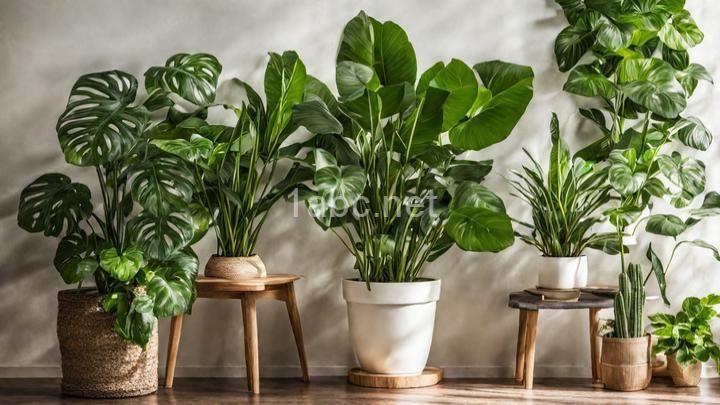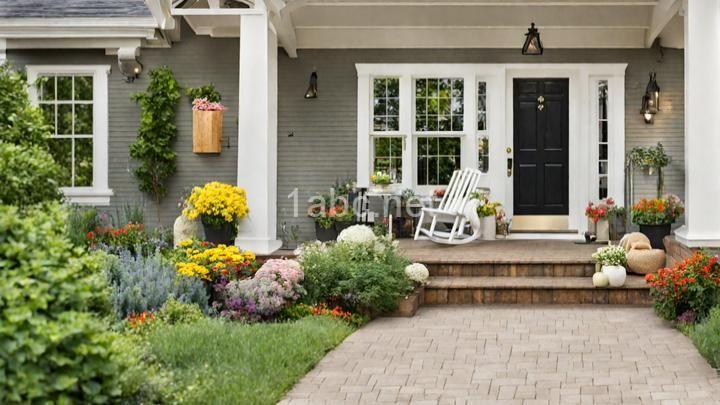Gardening 101: Essential Tips for Taking Care of House Plants while House Sitting

Welcome to Gardening 101! In this blog post, we will share some essential tips to help you take care of house plants while house sitting. Whether you're a newbie or have some experience with gardening, these tips will ensure that the plants thrive under your care.Taking care of house plants can be a fulfilling experience. Not only do they add beauty and freshness to your surroundings, but they also contribute to better air quality. However, it's important to remember that different plants have different needs. Understanding these needs and providing the right care will help your house plants flourish.
Let's dive into the tips!
I. Understand the Needs of Each Plant:
Before you begin caring for the house plants, it's crucial to research and understand their specific requirements. Each plant has its own preferences when it comes to sunlight, water, and temperature. Some plants thrive in bright, direct sunlight, while others prefer indirect or partial shade. By knowing the specific needs of each plant, you can provide the best possible care.
It's also important to take note of any special care instructions or potential issues for each plant. Some plants may be sensitive to drafts, while others may require extra humidity. Understanding these nuances will help you prevent common mistakes and keep the plants healthy.
II. Provide Adequate Sunlight:
Sunlight is vital for the growth and development of house plants. When house sitting, ensure that you place the plants in areas where they can receive the right amount of sunlight. Remember that different plants have different preferences. Some may thrive in direct sunlight, while others prefer indirect or partial shade.
If you're unsure about a plant's sunlight needs, observe its behavior. If the leaves start to yellow or droop, it may be an indication that the plant is not receiving enough sunlight. On the other hand, if the leaves start to curl or appear burnt, the plant may be getting too much direct sunlight. Adjust the plants' placement accordingly to provide the optimal sunlight conditions.
III. Watering Tips:
Watering is another crucial aspect of house plant care. It's important to strike the right balance, as both overwatering and underwatering can harm the plants. Before watering, check if the soil is dry by inserting your finger into the soil up to the second knuckle. If it feels dry, it's time to water the plant. If it still feels moist, hold off on watering for a few more days.
When watering, use room temperature water to avoid shocking the plants' roots. Ensure proper drainage by placing saucers or trays under the pots to catch excess water. This prevents water from sitting in the bottom of the pot, which can lead to root rot. Be mindful of the moisture levels and adjust your watering routine accordingly.
IV. Maintain Proper Humidity:
Indoor environments can be drier than what certain plants need. If you notice that the leaves of your house plants are drooping or browning at the edges, it may be a sign that they need more humidity. Increasing the humidity can be done in a few ways.
Misting the leaves of the plants with water can help increase the humidity around them. You can also place a tray filled with water near the plants. As the water evaporates, it creates a mini humid microclimate. Another option is to use a humidifier to regulate the humidity levels in the room. If you have multiple plants, grouping them together can create a microclimate that helps retain moisture.
V. Fertilizing Routine:
Fertilizing is important for providing the necessary nutrients to house plants. Research the type of fertilizer suitable for your plants and follow the recommended schedule. Different plants have different fertilizer requirements, so make sure to choose one that suits their needs. It's important to follow the instructions on the fertilizer packaging to avoid over-fertilizing, as this can harm the plants' roots and overall health.
VI. Pest Control:
Pests can be a nuisance for house plants, especially when you're house sitting. It's important to monitor your plants regularly for signs of pests such as aphids, mealybugs, or spider mites. Early detection is key to preventing infestations from spreading.
If you notice any pests, there are organic pest control methods you can try. For example, you can use a mixture of water and mild dish soap to create a soapy solution and spray it on the affected areas. Neem oil is another natural remedy that can be effective against pests. If the infestation is severe or you're unsure about the best course of action, it's always a good idea to seek professional advice.
Remember to isolate affected plants to prevent the pests from spreading to others. It's important to be proactive and take preventive measures to keep your plants pest-free.
VII. Pruning and Cleaning:
Regular pruning and cleaning are essential for maintaining the health and appearance of house plants. Remove dead leaves, flowers, or any signs of disease regularly to prevent them from affecting the overall health of the plant. Pruning overgrown branches helps maintain the desired shape and size of the plant.
In addition to pruning, it's also important to clean the leaves of the plants. Dust can accumulate on the leaves, which can hinder their ability to photosynthesize. Gently wipe the leaves with a soft cloth dipped in water to remove any dust or dirt. This will allow the plants to absorb light more efficiently and promote their growth.
Conclusion:
Taking care of house plants can be rewarding and enjoyable, even while house sitting. By understanding each plant's needs, providing adequate sunlight, water, humidity, and practicing proper maintenance, you can ensure their well-being. Remember to always follow any specific instructions provided by the homeowner regarding their house plants.
So, whether you're a seasoned gardener or just starting out, these essential tips will help you take care of house plants with confidence. Happy gardening!
FREQUENTLY ASKED QUESTIONS
How often should I water my house plants while house sitting?
When it comes to watering house plants while house sitting, it's important to consider the specific needs of each plant. The frequency of watering can vary depending on factors such as the type of plant, the size of the pot, the level of sunlight it receives, and the humidity in the environment.As a general guideline, most house plants prefer to be watered when the top inch of soil feels dry to the touch. However, it's always a good idea to check the care instructions or do some research on the specific plants you'll be tending to. Some plants, like succulents and cacti, prefer drier conditions and may only need to be watered once every few weeks. On the other hand, tropical plants may require more frequent watering, especially if they're positioned in a sunny spot.
To prevent overwatering, which can lead to root rot and other issues, it's best to water thoroughly but allow the excess water to drain out of the pot. Avoid leaving plants sitting in standing water for extended periods.
In addition to watering, it's also important to monitor the overall health of the plants while house sitting. Check for any signs of wilting or yellowing leaves, which could indicate a need for more or less water. Adjust your watering routine accordingly to ensure the plants are happy and healthy.
Remember, every plant is unique, so taking the time to understand their specific needs will go a long way in keeping them thriving while you're house sitting.
What is the best way to determine if my plants need watering?
The best way to determine if your plants need watering is by checking the moisture level of the soil. Stick your finger about an inch into the soil and see if it feels dry. If it does, then it's time to water your plants. Additionally, you can use a moisture meter or simply observe the condition of your plants. If the leaves are drooping or the soil is visibly dry, it's a good indication that your plants are thirsty. Remember, it's important not to overwater your plants either, as it can lead to root rot. So, always check the soil moisture before reaching for the watering can.
Do different types of house plants require different watering schedules?
Yes, different types of house plants do require different watering schedules. This is because various factors such as the type of plant, its size, the potting medium, and the environmental conditions can affect how often and how much water a plant needs. For instance, succulents and cacti are known for their ability to store water in their leaves and stems, so they generally require less frequent watering compared to other plants. On the other hand, tropical plants with large, lush foliage often need more water to support their growth.
To determine the watering schedule for your house plants, it's essential to consider their individual needs. Factors like the plant's natural habitat, soil moisture levels, and signs of dehydration or overwatering can guide you in finding the right watering routine.
Observing your plants closely can provide valuable insights. Look for signs such as wilting leaves, dry soil, or a plant that feels lighter when lifted. These indicators may suggest that your plant needs watering. However, it's crucial not to overwater your plants either, as excessive moisture can lead to root rot or other water-related issues.
In general, it's a good practice to water your house plants when the top inch of the soil feels dry to the touch. This can vary depending on the plant and the environmental conditions, so it's essential to monitor and adjust the watering schedule accordingly.
Remember, every plant is unique, and understanding its specific watering needs is key to keeping it healthy and thriving.
Can I use tap water to water my plants, or should I use filtered water?
Both tap water and filtered water can be used to water plants, but there are a few factors to consider. Tap water usually contains chlorine and other minerals that can potentially harm sensitive plants or accumulate in the soil over time. If you notice that your tap water has a high mineral content or if your plants are showing signs of sensitivity, such as yellowing leaves or stunted growth, using filtered water might be a better option.
Filtered water removes impurities, such as chlorine, heavy metals, and other contaminants, ensuring a cleaner water source for your plants. This can be particularly beneficial for delicate plants or those grown in containers where mineral buildup can be more pronounced.
Nevertheless, if your tap water quality is good and your plants are thriving, there may be no immediate need to switch to filtered water. It's always a good idea to monitor your plants' health and adjust your watering routine accordingly. Just remember to avoid overwatering, regardless of the water source you choose.


